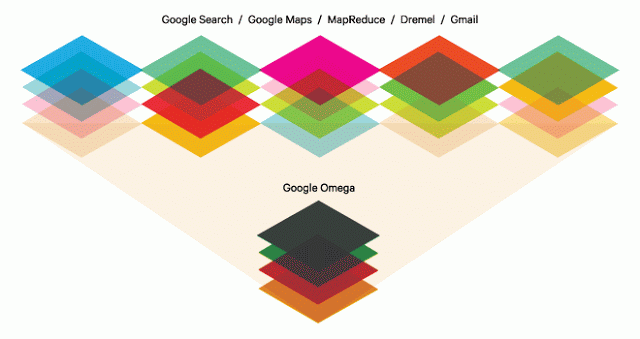

| Visitors Now: | |
| Total Visits: | |
| Total Stories: |

| Story Views | |
| Now: | |
| Last Hour: | |
| Last 24 Hours: | |
| Total: | |
Google’s systems send out alerts when they are down to their last few petabytes
From
Borg is a way of efficiently parceling work across Google’s vast fleet of computer servers, and according to Wilkes, the system is so effective, it has probably saved Google the cost of building an extra data center. Yes, an entire data center. That may seem like something from another world — and in a way, it is — but the new-age hardware and software that Google builds to run its enormous online empire usually trickles down to the rest of the web. And Borg is no exception.
Google's systems are big. Google engineers might receive an emergency alert because a system that stores data is down to its last few petabytes of space. In other words, billions of megabytes can flood a fleet of Google machines in a matter of hours.
Google’s system provides a central brain for controlling tasks across the company’s data centers. Rather than building a separate cluster of servers for each software system — one for Google Search, one for Gmail, one for Google Maps, etc. — Google can erect a cluster that does several different types of work at the same time. All this work is divided into tiny tasks, and Borg sends these tasks wherever it can find free computing resources, such as processing power or computer memory or storage space.
Wilkes says it’s like taking a massive pile of wooden blocks — blocks of all different shapes and sizes — and finding a way to pack all those blocks into buckets. The blocks are the computer tasks. And the buckets are the servers. The trick is to make sure you never waste any of the extra space in the buckets.
“If you just throw the blocks in the buckets, you’ll either have a lot of building blocks left over — because they didn’t fit very well — or you’ll have a bunch of buckets that are full and a bunch that are empty, and that’s wasteful,” Wilkes says.
Rather than run separate software systems on separate server clusters, Google can run everything on one cluster — thanks to Borg and its successor, Omega. Illustration: Ross Patton
See more and subscribe to NextBigFuture at 2013-03-06 23:46:24 Source: http://nextbigfuture.com/2013/03/googles-systems-send-out-alerts-when.html
Source:



